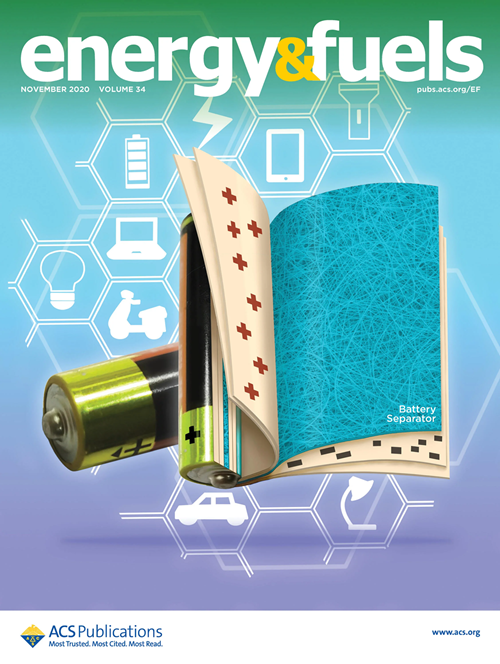Methane Hydrate Blockage in Gas–Water–Sand Systems: Insights from FBRM and PVM Analysis
IF 5.3
3区 工程技术
Q2 ENERGY & FUELS
引用次数: 0
Abstract
Hydrate reservoirs are accompanied by a large amount of water migration during the extraction process, leading to severe sand outflow, making sand control and wellbore flow safety a huge challenge. The development and blocking of hydrates in gas–water–sand systems were investigated in terms of shear rates using a high-pressure stirred autoclave equipped with FBRM and PVM probes to estimate the average hydrate particle dimensions and amount of particles related to the hydration volume percent and flow resistance of hydrate slurry. An increment in the measured motor current was first observed when the hydrate volume fraction was around 18 ± 2 vol % with sand concentration varied from 0 to 1.5 wt % and clear changes of hydrate particle size and number were monitored. Initially, the hydrate particle surface area keeps increasing until it reaches a maximum between 2.1 and 13.7 vol % hydrate for shear rate 400–800 rpm, after which it quickly declines to a plateau at 12.1–19.1 vol % in a pure water system and 7.5–22 vol % in a sand-containing system. Aqueous phase hydrate bed development may have started when the value of the plateau is reached. The results may contribute to the development of predictive models for the start of hydrate blocking behavior in gas–water–sand systems.

气-水-砂系统中的甲烷水合物阻塞:从 FBRM 和 PVM 分析中获得的启示
水合物储层在开采过程中伴随着大量的水迁移,导致严重的出砂,使出砂控制和井筒流动安全面临巨大挑战。利用配备 FBRM 和 PVM 探头的高压搅拌高压釜,从剪切率的角度研究了气-水-砂体系中水合物的发育和堵塞情况,以估算与水合物体积百分比和水合物浆液流动阻力相关的水合物颗粒平均尺寸和数量。当水合物体积分数约为 18 ± 2 vol %(砂浓度为 0 至 1.5 wt %)时,首次观察到测得的电机电流增大,并监测到水合物颗粒大小和数量的明显变化。起初,水合物颗粒表面积不断增大,直到在剪切速率为 400-800 rpm 时水合物体积分数达到 2.1-13.7 Vol % 之间的最大值,之后迅速下降,在纯水体系中为 12.1-19.1 Vol %,在含砂体系中为 7.5-22 Vol %。水相水合物床的发展可能是在达到高原值时开始的。这些结果可能有助于开发气-水-砂系统中水合物阻塞行为开始的预测模型。
本文章由计算机程序翻译,如有差异,请以英文原文为准。
求助全文
约1分钟内获得全文
求助全文
来源期刊

Energy & Fuels
工程技术-工程:化工
CiteScore
9.20
自引率
13.20%
发文量
1101
审稿时长
2.1 months
期刊介绍:
Energy & Fuels publishes reports of research in the technical area defined by the intersection of the disciplines of chemistry and chemical engineering and the application domain of non-nuclear energy and fuels. This includes research directed at the formation of, exploration for, and production of fossil fuels and biomass; the properties and structure or molecular composition of both raw fuels and refined products; the chemistry involved in the processing and utilization of fuels; fuel cells and their applications; and the analytical and instrumental techniques used in investigations of the foregoing areas.
 求助内容:
求助内容: 应助结果提醒方式:
应助结果提醒方式:


